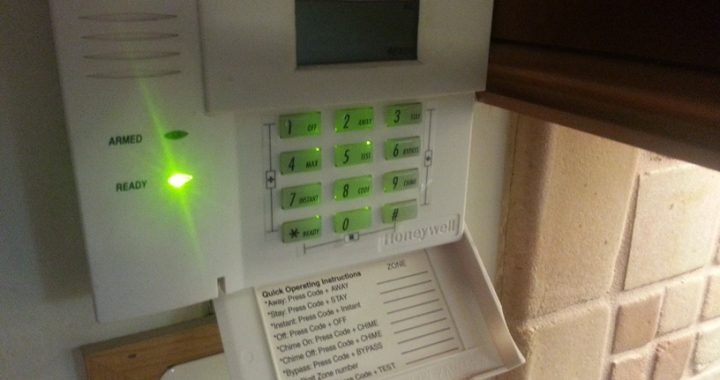The Risks of Cryptocurrency: Scams, Hacks, and Fraud

Cryptocurrency has garnered widespread attention for its potential to disrupt traditional financial systems, offering a decentralized and often more secure way of transacting online. However, as with any emerging technology, it comes with its own set of risks, particularly regarding scams, hacks, and fraud. While cryptocurrencies have been heralded for their innovation and potential to empower users, they are also vulnerable to malicious actors looking to exploit unsuspecting individuals. This article aims to highlight the primary risks associated with cryptocurrency, including scams, hacks, and fraud, and provide insights into how users can safeguard their investments.
1. Cryptocurrency Scams: The Dark Side of the Digital Revolution
Scams are perhaps one of the most pervasive threats to cryptocurrency users. The decentralized and often anonymous nature of cryptocurrencies makes them a prime target for fraudsters. There are several types of scams that individuals should be aware of when engaging in the cryptocurrency space.
Ponzi Schemes and Fake Investments: One of the most common scams in the crypto world is the Ponzi scheme, where individuals are promised high returns on their investments but, in reality, earlier investors are paid with the funds from newer investors. These schemes often present themselves as legitimate cryptocurrency investment opportunities, making it difficult for the untrained eye to differentiate between a genuine opportunity and a scam.
Fake Initial Coin Offerings (ICOs): An ICO is a fundraising method in which new cryptocurrencies are sold to the public in exchange for established cryptocurrencies like Bitcoin or Ethereum. However, fraudulent ICOs have emerged, where scammers create fake projects and offer tokens in exchange for funds, only to disappear once they’ve collected enough money.
Phishing Scams: Phishing is another widespread scam in the cryptocurrency world. Fraudsters often impersonate legitimate exchanges or wallet providers, sending fake emails or messages to lure users into revealing sensitive information such as private keys, passwords, or login credentials. These attacks can result in significant financial loss if users fall victim to them.
2. Hacks: A Growing Threat to Cryptocurrency Security
Hacking is an unfortunate reality in the cryptocurrency space, and the decentralized nature of blockchain technology does not inherently protect against cyberattacks. While blockchain itself is considered highly secure, the platforms and exchanges that facilitate cryptocurrency transactions are not immune to breaches.
Exchange Hacks: Cryptocurrency exchanges are central hubs where users can buy, sell, and trade digital assets. However, these exchanges can become prime targets for hackers due to the large volumes of digital currencies they hold. Some high-profile exchange hacks, such as the Mt. Gox hack in 2014, resulted in the loss of millions of dollars worth of Bitcoin and other cryptocurrencies. These incidents highlight the vulnerability of centralized exchanges and the potential risks of entrusting funds to third-party platforms.
Wallet Hacks: Another significant concern is the theft of cryptocurrencies directly from users’ wallets. While some users store their cryptocurrencies in digital wallets, these wallets can be compromised if not properly secured. Hackers may attempt to gain access to a user’s private key through malware or social engineering tactics. If a hacker gains control of a wallet’s private key, they can transfer the funds to their own account, leaving the user with no recourse for recovery.
Smart Contract Vulnerabilities: Many cryptocurrency projects use smart contracts to automate transactions or other actions on the blockchain. However, these contracts can have vulnerabilities that hackers may exploit. If a smart contract is poorly written or has security flaws, it can lead to the loss of funds or other unintended consequences. High-profile attacks, such as the DAO hack in 2016, demonstrated how vulnerabilities in smart contracts can result in significant financial damage.
3. Fraudulent ICOs and Tokens: A Growing Concern
Fraudulent initial coin offerings (ICOs) and tokens have been a prominent issue in the cryptocurrency industry, especially during the 2017 ICO boom. In many cases, fraudulent projects were able to raise millions of dollars by promising innovative blockchain solutions, only to either deliver nothing or disappear entirely. These projects often preyed on investors’ lack of experience or understanding of the technology behind cryptocurrencies.
Pump and Dump Schemes: Another common form of cryptocurrency fraud is the pump and dump scheme. In this scenario, fraudsters artificially inflate the price of a cryptocurrency by spreading false information or using coordinated efforts to buy up large amounts of the token. Once the price has been pumped up, the scammers sell off their holdings, causing the price to crash and leaving unsuspecting investors with worthless tokens.
Misleading Whitepapers: A whitepaper is a document that outlines the details of a cryptocurrency project, its goals, and how the funds raised will be used. Fraudulent projects often produce misleading or vague whitepapers to attract investors. These documents may lack specific technical details or contain unrealistic promises, but the project can still attract attention due to hype or buzzwords. Investors who do not conduct due diligence may fall victim to these scams.
4. Regulatory Uncertainty and Lack of Consumer Protection
A major factor contributing to the risks of cryptocurrency is the lack of regulation and consumer protection in the space. Unlike traditional financial markets, which are heavily regulated by government agencies, cryptocurrency markets are still developing in terms of legal frameworks. This regulatory uncertainty leaves investors vulnerable to scams, fraud, and manipulation, as there are often no legal avenues for recourse when things go wrong.
Many cryptocurrency exchanges and platforms operate in jurisdictions where regulations are unclear, and they may not adhere to best practices for security or transparency. Without proper oversight, there is little protection for users in the event of an exchange hack, fraudulent ICO, or other forms of financial loss.
5. How to Protect Yourself from Scams, Hacks, and Fraud
Given the inherent risks associated with cryptocurrency, it is essential for users to take proactive steps to protect themselves from scams, hacks, and fraud. Some of the best practices include:
Researching the Project: Before investing in any cryptocurrency or ICO, thoroughly research the project, its team, and its whitepaper. Look for transparency, clear goals, and detailed information about the technology behind the project. Be wary of projects that make unrealistic promises or lack credible team members.
Using Reputable Exchanges: When trading or buying cryptocurrencies, always use reputable exchanges with a track record of security. Ensure that the exchange offers two-factor authentication (2FA) and other security measures to protect your account.
Storing Assets in Secure Wallets: Avoid storing large amounts of cryptocurrency on exchanges. Instead, use a hardware wallet or a secure digital wallet that allows you to control your private keys. Hardware wallets are particularly secure because they store private keys offline, making them less susceptible to hacks.
Be Cautious of Phishing Scams: Always verify the authenticity of emails, websites, and social media messages before entering sensitive information. Ensure that you are on the official website of the exchange or wallet provider, and double-check URLs for any signs of phishing attempts.
Stay Informed About Regulatory Changes: Keep up-to-date with the regulatory landscape surrounding cryptocurrency in your country. Understanding the legal environment can help you make informed decisions about where and how to invest, as well as ensure that you are protected under any relevant consumer protection laws.
6. The Future of Cryptocurrency Security
As the cryptocurrency industry continues to mature, so too will its security measures. Innovations in blockchain technology, smart contract auditing, and secure wallets will likely reduce the risks of hacks and fraud. However, it is essential for users to remain vigilant and informed, as the landscape is constantly evolving.
Cryptocurrency holds enormous potential for revolutionizing financial systems, but like any technological advancement, it carries inherent risks. By understanding the threats posed by scams, hacks, and fraud, and taking proactive steps to protect themselves, cryptocurrency users can enjoy the benefits of this transformative technology while minimizing their exposure to risk.

 What Happens After Your Security Alarm Goes Off?
What Happens After Your Security Alarm Goes Off?  How Make-Good Services Ensure Smooth Lease Transitions and Compliance
How Make-Good Services Ensure Smooth Lease Transitions and Compliance  The Shift from Concept to Real-World 3D Build Projects
The Shift from Concept to Real-World 3D Build Projects  Effortless Office Moves in Melbourne
Effortless Office Moves in Melbourne  SEBI’s Latest Regulations for Investment Advisory Services in India
SEBI’s Latest Regulations for Investment Advisory Services in India  Exploring the Most Effective Business Services for Entrepreneurs
Exploring the Most Effective Business Services for Entrepreneurs  The Evolution of Industry: From the Industrial Revolution to the Age of Automation
The Evolution of Industry: From the Industrial Revolution to the Age of Automation